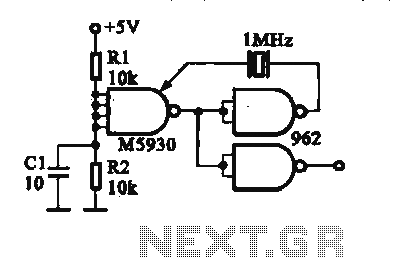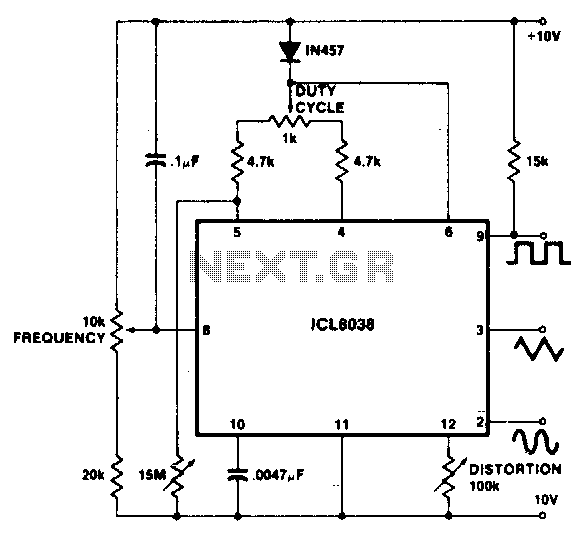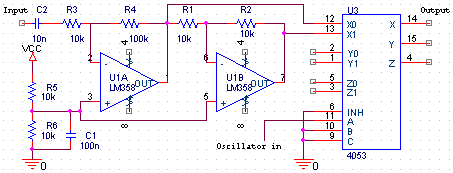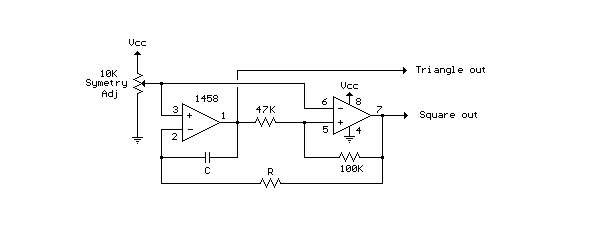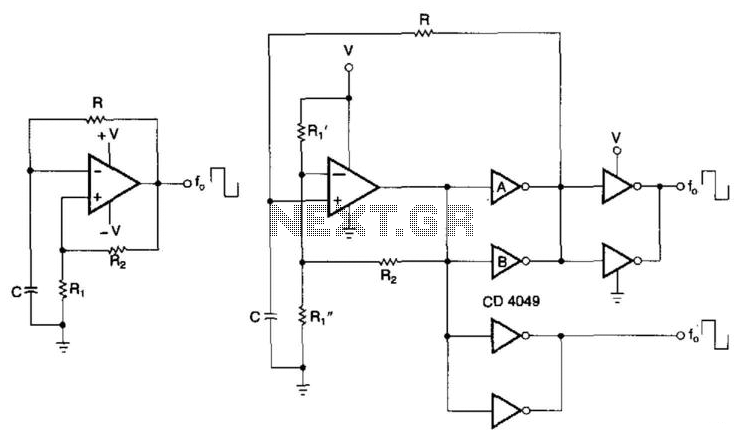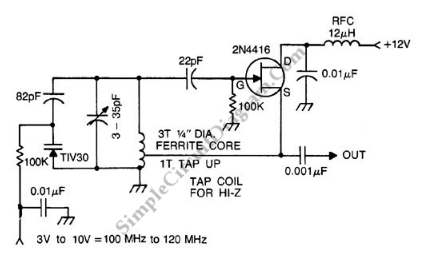
vackar vfo oscillator
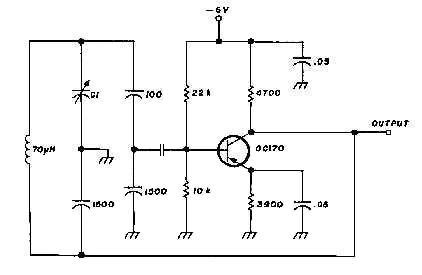
The Vackar configuration is recognized as one of the most stable VFO oscillators available. However, its usage is limited due to the NIH (not-invented-here) syndrome. This oscillator offers a frequency tuning range exceeding 2.5, a feature not typically found in other oscillator types. The coupling ratio is fixed, usually ranging from 1:4 to 1:9, while the tuning is independent of the coupling. The parameters of the transistor are isolated from the resonator. Unlike Clapp or other circuits, the transistor input is not overloaded. The collector output operates at low impedance, providing minimal gain sufficient to maintain oscillation. The feedback division ratio remains fixed, ensuring that even when the VFO is tuned, the impedance divider does not change. The stability of this oscillator is comparable to that of a crystal oscillator (XO). Jiri Vackar published comprehensive theoretical and analytical work on his oscillator designs, with the last known model being V66. Previous attempts to create a subtracting oscillator for PLL VHF synthesizers yielded disappointing results with designs such as Colpitts, Clapp, Hartley, Pierce, and Seiler. The Butler configuration outperforms single active component oscillators but still falls short of ideal performance. Common oscillator configurations do not guarantee satisfactory results; signal clipping by diodes can introduce additional phase noise and thermal frequency drift. High-quality oscillators typically employ two or three active devices, with the second device functioning as an impedance converter, isolation amplifier, AGC circuit, or phase shifter. Articles in QST often perpetuate outdated errors, particularly concerning limiter diodes. U. L. Rohde from the University of Washington has criticized the detrimental effects of limiter diodes in oscillators. The TS-950 uses diodes in its oscillator design. Ordinary oscillators often exhibit poor tuning ranges, unstable output voltage swings, and inadequate frequency stability. The industry frequently attempts to replace single oscillators with numerous integrated circuits, digital dividers, approximation registers, thermostats, and other unnecessary components. Initial measurements of the Vackar oscillator, taken with a frequency counter, were promising, especially when tested in a freezer at -30°C (-22°F), demonstrating remarkable stability. However, the use of ferrite and iron-powder tuning slugs has been dismissed. There is a widespread misconception that iron powder cores are beneficial; however, they are actually lossy and exhibit poor thermal stability. Modern ferrite, typically based on NiZn or MnZn alloys, is superior. Ferroxcube-Philips ferrite cores are well-regarded and manufactured in Spain, while Iskra-Feriti from Slovenia produces high-quality ferrite products, including toroidal and double-hole cores suitable for transformers. Epcos ferrites have been criticized for poor delivery times. Critical components for the VFO include high-quality capacitors, inductors, a voltage regulator, and the transistor. The design can accommodate dual gate MOSFETs as well. The LM317 voltage regulator is not ideal; alternatives such as the low-noise MAC01 or the LM78L06 with 50µV noise are more suitable. The LM723 voltage regulator is considered one of the best due to its low noise, high input voltage capability, and flexibility. For the oscillator, an expectation of 80dB spur-free spectrum is reasonable. TFT capacitors are excellent choices. The mechanical design must also be carefully considered.
The Vackar VFO oscillator employs a unique configuration that maximizes stability and performance by isolating the transistor's parameters from the resonator. This isolation is crucial for maintaining consistent oscillation characteristics, as it prevents variations in the transistor's performance from affecting the oscillator's output frequency. The fixed coupling ratio ensures that the oscillator can be tuned without altering the coupling characteristics, allowing for precise frequency adjustments.
The choice of components plays a significant role in achieving optimal performance. High-quality capacitors with known properties are essential for minimizing losses and ensuring stability. Inductors must be selected based on their inductance value and quality factor (Q), as these factors directly impact the oscillator's performance. The voltage regulator must provide low noise and stable output to avoid introducing unwanted fluctuations in the oscillator's operation.
The oscillator's design allows for the integration of dual gate MOSFETs, which can enhance performance by providing additional isolation and gain control. The selection of a suitable voltage regulator is critical; alternatives to the LM317 should be considered to ensure the lowest possible noise levels. The LM723 is particularly noteworthy for its versatility and low noise characteristics, making it an excellent choice for applications requiring high stability.
In conclusion, the Vackar VFO oscillator represents a sophisticated design that prioritizes stability and performance through careful component selection and configuration. With its ability to maintain a stable output across a wide tuning range and its resilience to environmental changes, it stands out as a reliable choice for various electronic applications.It is probably the most stable VFO oscillator known. Vackar configuration is rarely used because of known reason. (The NIH, not-invented-here syndrome). The frequency tuning range is above 2. 5, not observable in any other type of oscillator. The Coupling ratio is fixed; typical range is 1:4 up to 1:9. The tuning is provided independently of coupling. Transistor`s parametric variables are isolated from the resonator. The transistor input is not overloaded as Clapp or other circuits. The collector output is at low impedance providing low gain just to maintain the oscillation. The feedback division ratio is fixed. Even if the VFO is tuned, the impedance divider is fixed. The stability is close to XO. Jiri Vackar published his work in a book, providing theory and analysis of each type of his oscillator. What was the last model, V66 Who knows A while ago, I thought about subtracting oscillator for PLL VHF synthesizer.
Few designs failed high expectations. I used Colpitts, Clapp, Hartley, Pierce, and Seiler. Junk. The Butler is better than single active component oscillator, but it is not good enough. Commonly used oscillator configuration does not guarantee good performance. The signal clipping by diodes guarantees additional phase noise and thermal frequency drift. The best oscillators very commonly use two or three active devices. This is valid for VCOs, TCXOs and OCXOs. The second device acts as an impedance converter, isolation amplifier, AGC circuit, and a phase shifter. The articles in QST very often copy old mistakes, and limiter diodes. U. L. Rohde from Univ. of Washington wrote few articles about the poison of limiter diodes in oscillators. TS-950 use diodes in oscillators. Ordinary oscillator has poor tuning range, the output voltage swing is unstable, and the frequency stability is poor as well.
The industry tries hard to make its sale pitch, to replace single oscillator with 50 ICs, digital dividers, approximation registers, thermostats, and other junk. Now what I checked the Vackar. First measurements with frequency counter were quite positive. The Vackar VFO was running in freezer at -30C. That is about -22F. Not bad for Yukon Territory. Stable. Can it run more stable The Ferrite and iron-powder tuning slugs went out, down the pipes. There is a strong public belief the iron powder cores are good. It`s not. In thermal stability they are better than heavy ferrites. Amidon and Micrometals cores use iron powder technology from the 50`s, nobody use it any more. They are quite lossy, the grains are not properly bound together. You will have "brown fingers" from handling these cores. That`s better than brown nose. Generally, ferrite is based on NiZn or MnZn alloy. Quite good are Ferroxcube-Philips ferrite cores, presently manufactured in Spain. The Spanish sampling service was good. The reps for US are fine. The Ferroxcube`s sales reps in Poland are asking $230 for delivery of $1USD stuff. Sort of robbers the Poles, is that right Iskra-Feriti from Slovenia manufactures good ferrite products, toroidal cores and double hole cores, excellent for transformers.
I recommend this company. On the other hand, the experience with Epcos ferrites is weird. Epcos is not able to deliver anything in time, screwing around "-we forget". However, this is about VFO. There are few critical components - good caps of known properties, inductors, voltage regulator, and the transistor. It will run with dual gate MOSFET as well. The LM317 voltage regulator is not the right choice. LM317 is good for car battery chargers. Low noise MAC01 voltage regulator will do the job, even LM78L06 with 50uV of noise is fine. The best regulator of all times is maybe the LM723. It has low noise, high input voltage, and the flexibility. For the oscillator, expect 80dB spur free spectrum. The TFT caps are very good. The mechanical design has to b 🔗 External reference
The Vackar VFO oscillator employs a unique configuration that maximizes stability and performance by isolating the transistor's parameters from the resonator. This isolation is crucial for maintaining consistent oscillation characteristics, as it prevents variations in the transistor's performance from affecting the oscillator's output frequency. The fixed coupling ratio ensures that the oscillator can be tuned without altering the coupling characteristics, allowing for precise frequency adjustments.
The choice of components plays a significant role in achieving optimal performance. High-quality capacitors with known properties are essential for minimizing losses and ensuring stability. Inductors must be selected based on their inductance value and quality factor (Q), as these factors directly impact the oscillator's performance. The voltage regulator must provide low noise and stable output to avoid introducing unwanted fluctuations in the oscillator's operation.
The oscillator's design allows for the integration of dual gate MOSFETs, which can enhance performance by providing additional isolation and gain control. The selection of a suitable voltage regulator is critical; alternatives to the LM317 should be considered to ensure the lowest possible noise levels. The LM723 is particularly noteworthy for its versatility and low noise characteristics, making it an excellent choice for applications requiring high stability.
In conclusion, the Vackar VFO oscillator represents a sophisticated design that prioritizes stability and performance through careful component selection and configuration. With its ability to maintain a stable output across a wide tuning range and its resilience to environmental changes, it stands out as a reliable choice for various electronic applications.It is probably the most stable VFO oscillator known. Vackar configuration is rarely used because of known reason. (The NIH, not-invented-here syndrome). The frequency tuning range is above 2. 5, not observable in any other type of oscillator. The Coupling ratio is fixed; typical range is 1:4 up to 1:9. The tuning is provided independently of coupling. Transistor`s parametric variables are isolated from the resonator. The transistor input is not overloaded as Clapp or other circuits. The collector output is at low impedance providing low gain just to maintain the oscillation. The feedback division ratio is fixed. Even if the VFO is tuned, the impedance divider is fixed. The stability is close to XO. Jiri Vackar published his work in a book, providing theory and analysis of each type of his oscillator. What was the last model, V66 Who knows A while ago, I thought about subtracting oscillator for PLL VHF synthesizer.
Few designs failed high expectations. I used Colpitts, Clapp, Hartley, Pierce, and Seiler. Junk. The Butler is better than single active component oscillator, but it is not good enough. Commonly used oscillator configuration does not guarantee good performance. The signal clipping by diodes guarantees additional phase noise and thermal frequency drift. The best oscillators very commonly use two or three active devices. This is valid for VCOs, TCXOs and OCXOs. The second device acts as an impedance converter, isolation amplifier, AGC circuit, and a phase shifter. The articles in QST very often copy old mistakes, and limiter diodes. U. L. Rohde from Univ. of Washington wrote few articles about the poison of limiter diodes in oscillators. TS-950 use diodes in oscillators. Ordinary oscillator has poor tuning range, the output voltage swing is unstable, and the frequency stability is poor as well.
The industry tries hard to make its sale pitch, to replace single oscillator with 50 ICs, digital dividers, approximation registers, thermostats, and other junk. Now what I checked the Vackar. First measurements with frequency counter were quite positive. The Vackar VFO was running in freezer at -30C. That is about -22F. Not bad for Yukon Territory. Stable. Can it run more stable The Ferrite and iron-powder tuning slugs went out, down the pipes. There is a strong public belief the iron powder cores are good. It`s not. In thermal stability they are better than heavy ferrites. Amidon and Micrometals cores use iron powder technology from the 50`s, nobody use it any more. They are quite lossy, the grains are not properly bound together. You will have "brown fingers" from handling these cores. That`s better than brown nose. Generally, ferrite is based on NiZn or MnZn alloy. Quite good are Ferroxcube-Philips ferrite cores, presently manufactured in Spain. The Spanish sampling service was good. The reps for US are fine. The Ferroxcube`s sales reps in Poland are asking $230 for delivery of $1USD stuff. Sort of robbers the Poles, is that right Iskra-Feriti from Slovenia manufactures good ferrite products, toroidal cores and double hole cores, excellent for transformers.
I recommend this company. On the other hand, the experience with Epcos ferrites is weird. Epcos is not able to deliver anything in time, screwing around "-we forget". However, this is about VFO. There are few critical components - good caps of known properties, inductors, voltage regulator, and the transistor. It will run with dual gate MOSFET as well. The LM317 voltage regulator is not the right choice. LM317 is good for car battery chargers. Low noise MAC01 voltage regulator will do the job, even LM78L06 with 50uV of noise is fine. The best regulator of all times is maybe the LM723. It has low noise, high input voltage, and the flexibility. For the oscillator, expect 80dB spur free spectrum. The TFT caps are very good. The mechanical design has to b 🔗 External reference
